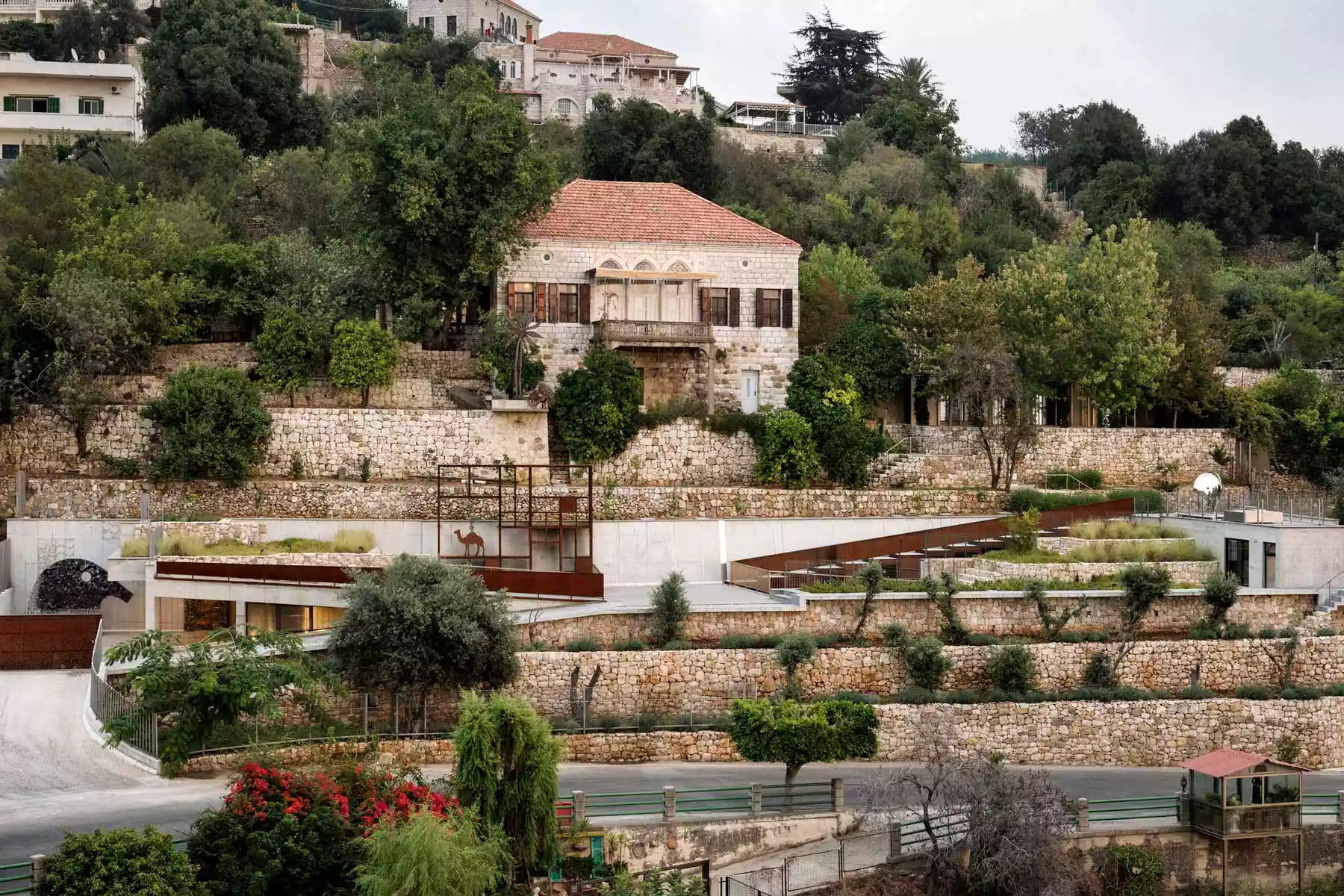After decades of war and political turmoil, Beirut’s artists and makers continue to produce boundary-pushing works as the city rebuilds.
Moreover, the cities that most enchant me wear their histories on their sleeves. For instance, I once visited a fashionable boutique in a hidden courtyard in Berlin, its façade pockmarked with bullet holes from World War II. In Jerusalem, I had an epic multi-course meal at a throbbing café with all-white décor, then ended the night watching black-clad pilgrims rock back and forth in front of the Wailing Wall. It was an exhilarating and disquieting experience, akin to finding a portal that could transport me between centuries.
Beirut: A City of Contrasts
This fascination with places where the past rubs provocatively against the present is the reason I couldn’t wait to see Beirut, an ancient port city that has survived centuries of violent conflict and destruction. I was told that it was a place where you’d walk by a sleek Japanese-inspired bar on your way to an 18th-century villa built on top of Roman baths.
When I finally got the chance to visit in January of last year, I decided that not even the ongoing protests were going to deter me. Lebanon’s most recent revolution was ignited in October 2019 by wildfires that burned thousands of acres of trees—a catastrophe many Lebanese felt the government did next to nothing to stop, coupled with a new tax on platforms like WhatsApp, FaceTime, and Skype. However, the unrest had been brewing for years, fueled by multiple government corruption scandals and the gradual breakdown of basic infrastructure.
The Impact of the Explosion
Of course, last year would prove to be one of the country’s most challenging: the outbreak of the global pandemic was followed in August by a massive explosion in the port that claimed more than 200 lives while damaging or destroying over 100 buildings within a half-mile radius. Much of the country blamed the government for the blast, attributed to the improper storage of 2,750 tons of ammonium nitrate.
“Beirut is where artists of the Levant come to breathe, where they can express their ideas without fear of censorship. It has always been open to both the West and the East,” one of my contacts remarked.
Experiencing the Art Scene
In January, I chose not to let the protests deter my visit. I trusted the reassuring words of art patrons Zoe and Nabil Debs, whom I was traveling to Beirut to interview. The couple—she’s British, he’s Lebanese—met almost three decades ago in London and lived in Europe before moving to Beirut in 2010. They share a love for saving and transforming timeworn spaces.
For the past 10 years, the Debses have been converting an 18th-century villa belonging to Nabil’s family into Arthaus Beirut, an intimate hotel in the bohemian Gemmayze neighborhood. The hotel features 12 rooms and suites filled with antiques, family heirlooms, and furnishings sourced from around the globe, showcasing works from the couple’s remarkable art collection ranging from Byzantine funerary busts to contemporary murals by street artists.
Resilience Amidst Recovery
In October, just before opening to guests, Arthaus hosted an exhibition of works by 60 Middle Eastern artists. “A journalist friend commented that Beirut is at its best during the worst of times,” Nabil said. The city, inhabited for over five millennia, has, according to legend, been destroyed and rebuilt at least nine times.
:max_bytes(150000):strip_icc():format(webp)/beit-trad-terrace-BEIRUTART0521-7671ab7d9d8b4b5e9e198abbc64e1c2b.jpg)
By the time I visited, the Debses had arranged three whirlwind days of introductions to the artists and designers with whom they collaborate. “We organize visits to private ateliers, houses, and museums throughout Beirut and beyond,” Zoe said. “The hospitality and creativity of this country is exceptional, and we want our guests to experience it all as if they were family friends.”
:max_bytes(150000):strip_icc():format(webp)/dalloul-art-foundation-beirut-BEIRUTART0521-186f40fe638a48f9a5065f7fa074bddc.jpg)
During one of my visits, I encountered Nadim Karam, a multidisciplinary Lebanese artist whose works had caught my eye years prior. He had transformed the landscape of art in Beirut, creating spaces that bridge functional and artistic realms. Karam expressed, “Lebanon is a magical place because of the mess; I need the energy from the cycle of destruction and remaking to work.” His contemporary gallery, A.Muse.um, serves as a testament to his vision, embodying the spirit of resilience prevalent in Beirut.
:max_bytes(150000):strip_icc():format(webp)/arthaus-kitchen-restaurant-beirut-BEIRUTART0521-47a4d12382bb4e3db660f5143c130f45.jpg)
In conclusion, Beirut stands as a vivid canvas where history meets creativity. Each artist and designer contributes to a rich tapestry, symbolizing resilience and shared dreams for a brighter future. As I reflect on my trip, I am reminded that while the city faces challenges, the passion of its creative community remains unyielding, ensuring that art continues to thrive amidst adversity.




